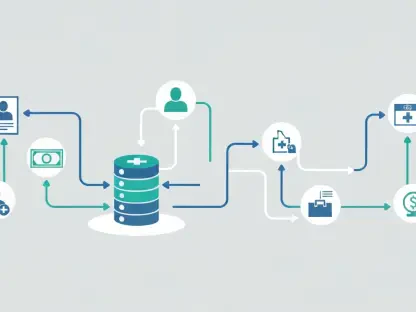In the fast-paced world of DevOps, balancing high deployment frequency with maintaining system stability, security, and efficient problem resolution is crucial to preventing deployment horrors which can have significant repercussions, especially for mission-critical systems. Increasing deployment frequency while ensuring stable and secure releases can be challenging but is essential for keeping up with market demands and technological advancements. This article outlines various strategies and best practices that organizations can adopt to minimize deployment risks and ensure stable DevOps practices.
Advanced CI/CD Practices and Automation
Implementing advanced Continuous Integration/Continuous Deployment (CI/CD) practices is fundamental for DevOps organizations seeking to increase deployment frequency while maintaining system stability and security. Infrastructure as code and other automations enable organizations to deploy more frequently, reducing the time between code development and deployment. According to the State of DevOps Report 2023, elite performers can deploy on-demand with change lead times of less than a day, showcasing the efficiency of advanced CI/CD practices. However, even these high-performing teams report a 5% change failure rate, which can be risky for mission-critical systems requiring near-perfect uptime.
The potential impact of deployment failures is exemplified by CrowdStrike’s recent failed deployment, which affected 8.5 million Microsoft Windows computers and caused nearly 10,000 flight cancellations worldwide. The incident was rooted in a mismatch between expected and provided input fields, leading to a system crash and significant financial losses. This underscores the importance of rethinking deployment strategies and assessing the inherent risks associated with frequent releases. By implementing advanced CI/CD practices and automating deployment processes, organizations can reduce the likelihood of such deployment failures and ensure more stable and secure releases.
Evaluating Deployment Risks
To prevent large-scale deployment issues, it is crucial to evaluate the requirements and implementation risks of every release, as not all releases carry the same level of risk. Many organizations are moving towards automating deployment risk score creation, utilizing machine learning-driven approaches to generate risk scores. These risk scores help identify the necessary levels of testing and operational review required before releases, providing a more objective and data-driven evaluation of potential deployment risks.
David Brooks, SVP of evangelism at Copado, emphasizes that avoiding deployment horrors starts in the planning phase. A data-driven approach to characterizing deployments considers various factors such as the number of users impacted, test coverage, and dependency complexities. Feedback loops are then used to calibrate these risk scores based on actual business impacts, capturing outages, performance issues, security incidents, and end-user feedback. By evaluating deployment risks and incorporating machine learning-driven risk assessment, organizations can make more informed decisions about release timing and necessary precautions, ultimately minimizing the chances of deployment failures and ensuring a more stable deployment process.
Integrating Security into the Developer Experience
Post-deployment security issues represent major risks, prompting DevOps teams to adopt shift-left security practices and integrate security considerations into the earliest stages of the development lifecycle. Establishing DevOps security non-negotiables involves instituting policies, controls, automations, and tools while ensuring developers prioritize security throughout the development process. Christopher Hendrich, associate CTO of SADA, underscores the importance of integrating security and quality controls early in the software development lifecycle to mitigate risks and enhance overall system security.
Key practices to minimize deployment risks include implementing a software developer’s security standard based on guidelines from frameworks like OWASP Security Fundamentals, NIST Secure Software Development Framework (SSDF), and ISO 27034. Additionally, incorporating risk management in agile development by reducing technical debt and completing complex stories early in the sprint and release cycles helps address potential security risks early on. By focusing on integrating security into the developer experience and adhering to established security standards, organizations can significantly reduce post-deployment security issues and ensure more secure and stable releases.
Continuous Deployment Prerequisites
For continuous deployment to be effective and secure, a multilayered, end-to-end approach is necessary to maintain both security and quality. Melissa McKay, head of developer relations at JFrog, suggests implementing practices such as continuous testing with high test coverage, feature flagging, and canary release strategies to ensure stable deployments and control experimental capabilities. These practices are essential for maintaining security and quality while enabling frequent releases.
Continuous testing with comprehensive test data and end-user persona-driven testing is crucial, utilizing synthetic data and generative AI testing capabilities to simulate real-world scenarios. Feature flagging allows organizations to control experimental features and configurations with a targeted user base, minimizing the risk of widespread issues. Meanwhile, canary release strategies deploy multiple application versions to a small subset of users, capturing any issues within a smaller end-user base before a full-scale rollout. By implementing these continuous deployment prerequisites, organizations can ensure that their deployment processes are robust, secure, and less prone to introduction of critical errors.
Platform Engineering for Complex Applications
Organizations with numerous mission-critical applications, extensive AI model management, or multiple SaaS product lines should consider adopting platform engineering practices to drive standards and efficiencies across their DevOps processes. Kevin Cochrane, CMO of Vultr, underscores the importance of platform engineering for cloud-native and AI-native applications, emphasizing that it enhances DevOps by automating key processes related to infrastructure provisioning, model observability, and data governance.
Understanding the business impact of bad deployments is fundamental for organizations aiming to minimize deployment risks. It is essential to answer critical questions about the business impact, recovery time, and frequency of bad deployments. Investments in observability, application monitoring, and AIOps are crucial for reducing the business impact and improving the mean time to recovery (MTTR) from major incidents. These technologies provide valuable insights into system and application status, help detect errors early, and enhance the overall resilience of deployment processes.
Developing a Major Incident Playbook
In the dynamic realm of DevOps, achieving a balance between frequent deployments and the stability, security, and efficiency of systems can be challenging. This balance is crucial to avoid deployment failures that can have serious repercussions, particularly for mission-critical systems. As market demands and technological advancements press for higher deployment frequencies, maintaining stable and secure releases becomes even more vital.
Addressing these challenges is essential to meet market demands and leverage technological advances effectively. Organizations striving for continuous improvement must adopt strategies and best practices aimed at minimizing deployment risks while ensuring that their DevOps processes remain robust and efficient. Emphasizing system stability, security protocols, and swift problem resolution can help mitigate the risks associated with frequent deployments.
Implementing automated testing, continuous integration, and continuous delivery (CI/CD) pipelines are some key practices. Additionally, fostering a culture of collaboration between development and operations teams can lead to smoother deployments. Regularly updating documentation and conducting thorough post-deployment reviews are also vital steps.
By focusing on these strategies, organizations can enhance their DevOps practices, ensuring they can deploy quickly without sacrificing the stability and security of their systems. This balance not only helps in meeting market expectations but also in maintaining the integrity and performance of critical systems.









